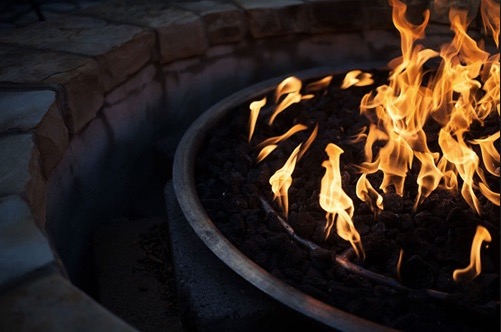Are you planning to gather family or friends around a cozy fire pit or crackling bonfire? If so, absorb the warm atmosphere – but avoid the smoke.
There are millions of very small particles contained in wood smoke. When smoke is breathed in, those particles may lodge deep inside of your respiratory system.
Most likely you have experienced the results – coughing, runny nose, and stinging eyes. For most people, they are short-term symptoms. However, inhaling smoke can be quite dangerous for people who have underlying respiratory illnesses.
According to Bohdan Pichurko, MD, Director of Pulmonary Function Lab, the following are ways to make your fires safer and protect your lungs.
Your health and fires
Most people are able to safely enjoy outdoor fires as long as they don’t breathe in the smoke or sit too close to it. However, according to Dr. Pichurko, it is a completely different story for almost 40 million Americans who suffer from chronic obstructive pulmonary disease (COPD) or asthma.
Dr. Pichurko says that even briefly inhaling wood smoke if you suffer from an underlying respiratory disease can cause your airway to tighten and could result in you ending up in the emergency room. He advises you to take extra precautions if you have COPD or asthma. Sit as far away as possible from the fire, and pay close attention at all times to the way that the wind is blowing.
Your lungs cannot stand the heat
There are other health hazards that you need to avoid besides smoke. The actual heat is harmful. Dr. Pichurko says that when air is inhaled that is a higher temperature consistently from the surrounding air, that can cause even more damage than smoke inhalation to your lower respiratory tract’s lining.
He says that if you feel intense heat on either your facer hands, that is a clear signal that you are breathing in air that is too hot. You should move further away from the fire. If you’re worried about precautions then read below and also look at this good guide in everything you need to know about outdoor fireplaces.
7 Safety Tips For Building Fires
Most people don’t put a lot of thought into how they build fires. However, Dr. Pichurko says that you should. The following are his top seven tips for building safer outdoor fires:
Only use untreated hardwood. The best wood to use is wood that is kept dry and well-seasoned (six months to one year). That can reduce how much smoke is produced by the fire. Wood coming from construction sites, railroad ties and pressure-treated lumber contain arsenic and other toxic chemicals. It isn’t safe to burn them.
With manufactured logs, you need to play it safe. Typically manufactured logs are made out of wax and sawdust or similar kinds of materials. They might not produce as much smoke as traditional firewood, however that doesn’t mean the smoke is safer, according to Dr. Pichurko. They often contain numerous ingredients and it isn’t possible to predict the way your lungs will react to them, he says. Also, if you’re planning on cooking over a fire using manufactured logs, make sure the brand has been approved for cooking use (most are not).
Only light a fire on a calm day. Choose a different day to build your fire if winds are blowing in excess of 20 miles an hour.
Keep the logs and fire small. Smaller fires will burn with less smoke, more completely, and hotter. For best results, use firewood that is smaller than 6 inches in diameter.
Teach children about fire safety. Around outdoor fires, children need close supervision and adult guidance. Teach them to keep a distance from a fire, and make sure their exposure to smoke is limited. Dr. Pichurko says children’s respiratory systems are developing still.
To start a fire, don’t use accelerants such as gasoline. They can cause a fire to start raging out of control or flare up very fast. They may release toxins as well. To start a fire more safely, use small sticks or approved cubes instead.
Keep a hose or bucket of water close by. When you have water near the fire, it will ensure you are prepared to act in case the flames become out of control or spread. Make sure to keep in mind the potential for respiratory damage and protect yourself accordingly.

